Alfalfa
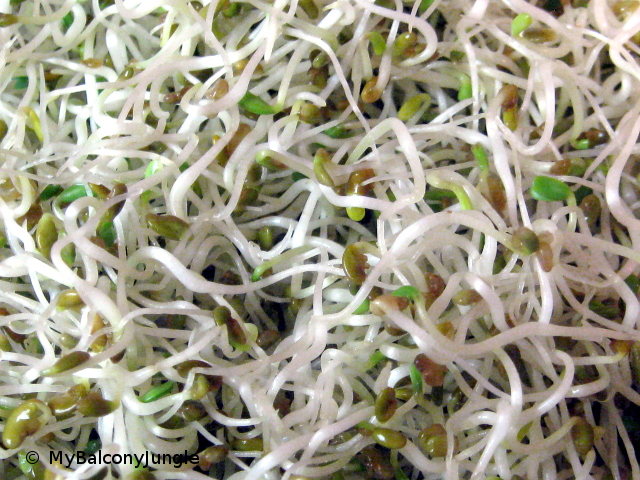
When most people think of sprouts, this is what they think of. Alfalfa sprouts are very popular. They are what is called a leafy salad type. Very small seeds and very easy to grow with a mild nutty flavour. I soak mine for at least 6 hours and start eating them after a couple of days of sprouting. After the second or third day the first leaves will start to appear and if provided with a bit of light the leaves will green up nicely. I like to grow mine in the The EasySprout™ because its translucent plastic construction allows the sprouts to receive some light. If you want to grow a thick mat of leafy green alfalfa sprouts, the SproutMaster™ works nicely.
Lentils
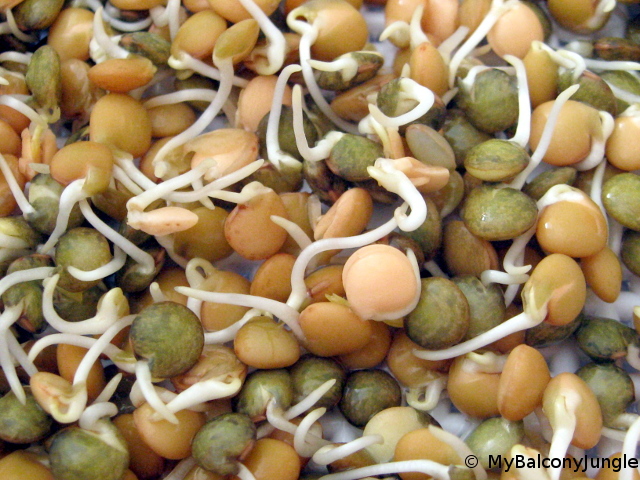
I love growing lentils. They come in many varieties: pink, green, black, brown, speckled, large, small... but they all taste the same. Very mild taste with a bit of crunch. Perfect. Soak them for about 8 hours and your ready to go. I like to start eating them pretty much after the first day and by the time they've been sprouting for 3 days they are mostly gone. Lentils are a legume so if you let them sprout too long, leaves will start to form and split the seed. I prefer to eat them small.
Fenugreek
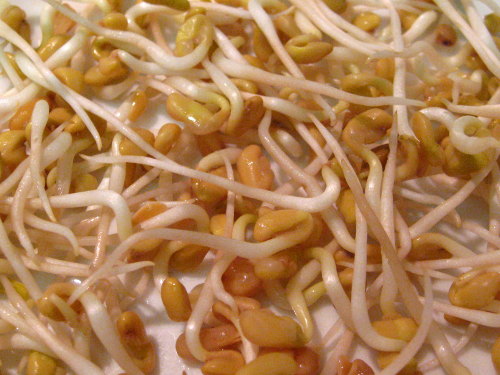
I would say that Fenugreek is an acquired taste but it can grow on you fast. Fenugreek has medicinal qualities, particularly for breast feeding women, or so I hear. It has a slightly bitter, nutty flavour that's hard to describe. Soak for 6 to 8 hours and start eating before they get too long - about 2 or 3 days after soaking. The seeds are a good size and the sprouts grow long and thick fast. Fenugreek is one of those sprouts that's good to eat at any stage of growth.
Radish
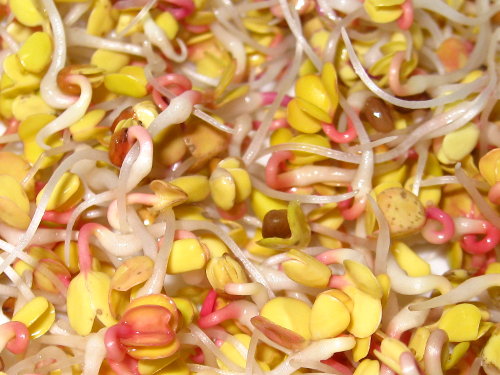
I can't eat too much radish sprout. Gives me heart burn. But it's a nice taste if you like the heat. China Rose and Daikon are two varieties that come to mind. Soak them for 6 or 8 hours. The roots will grow quite thick and form lots of fine root hairs which are most apparent just before a rinse. It looks like mold but don't be fooled. There is nothing wrong with the sprouts.
Broccoli

Broccoli is legendary in the sprouting world for its anti oxidizing properties. As the sprout breaks down when chewed, a compound known as sulforaphane is produced that is said to stimulate the bodies immune system. But I just like to eat them because they taste great. You only need to soak broccoli seeds for a couple of hours to start them sprouting. While growing, the roots tend to grow into a tangled mess so rinse and break up regularly. Broccoli sprouts have an amazingly fresh and slightly spicy taste. And they are not cheap. It's common to find them offered as part of a seed blend with other salad types.
Peas

Not just green but also yellow and speckled, large and small. They have a very pleasant 'pea' taste when eaten within a day or two of soaking while the roots are short, long before the leaves start to emerge. In fact, if you sprout them too long they will split and in some cases, fall apart. I like them to sprout just enough that I can remove the hull. Soak them for a good 8 to 12 hours and within 24 hours they'll taste just right.
Mung Beans
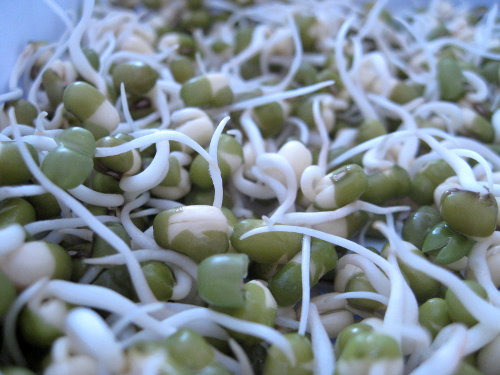
Mung bean sprouts are the most widely used sprout, very common in Asian cuisine and available in the produce section of many North American grocery stores where they are known simply as 'bean sprouts'. When sprouting these at home, don't expect long fat crunchy sprouts like the ones you buy at the stores. I've found that 8 hours of soaking is ample to get them going and the best time to eat these is no more than 2 days after soaking while the roots are still relatively short. I've read that it is best not to expose them to light when sprouting or they will taste bitter. I usually sprout these in my SproutMaster™ so light exposure isn't a problem.
